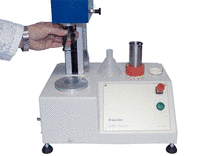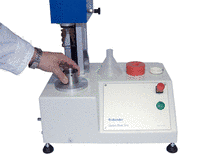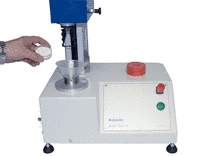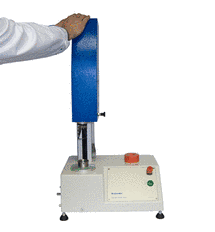GlutoPeak®
Test procedure
The test is simple and explained quickly.
First you place the paddle in the instrument. Then, 10g solvent (water) will be weighed out in the sample cup, the cup will be placed in the instrument. Now the sample is added into the cup and the measuring head is placed in the starting position.
The instrument starts automatically and mixes the sample at the preset speed. The software will automatically record and display the data relative to the time and torque graph/curve.
For typical flour samples, approximately 10 tests can be completed within 1 hour.
The principle
In a flour, whole meal or gluten water slurry; gluten will be separated by the mixing action and aggregated. The sample and amount of solvent (water) added is constant during the whole test procedure.
The sample temperature and the speed are kept constant until the
completion of the test.
After a time (dependent upon the property of the flour sample), the gluten aggregates. A uniform gluten network is formed, which results in a strong increase of the torque curve. Further mixing destroys the network and the torque curve will decrease. The resulting torque curve has a typical shape
(Fig. 5).
After the test, the software automatically evaluates the results. Most important is the peak time (time to reach the maximum torque) and the maximum height of the curve.
Strong gluten shows short peak Advantages times with high peaks, while weak gluten shows late aggregation peak times with low peaks or even no peaks (biscuit flours).
The ranges of peak times are between 60 and 600s (1-10 min). The flours can be rated due to their different peak maximum times and heights.




